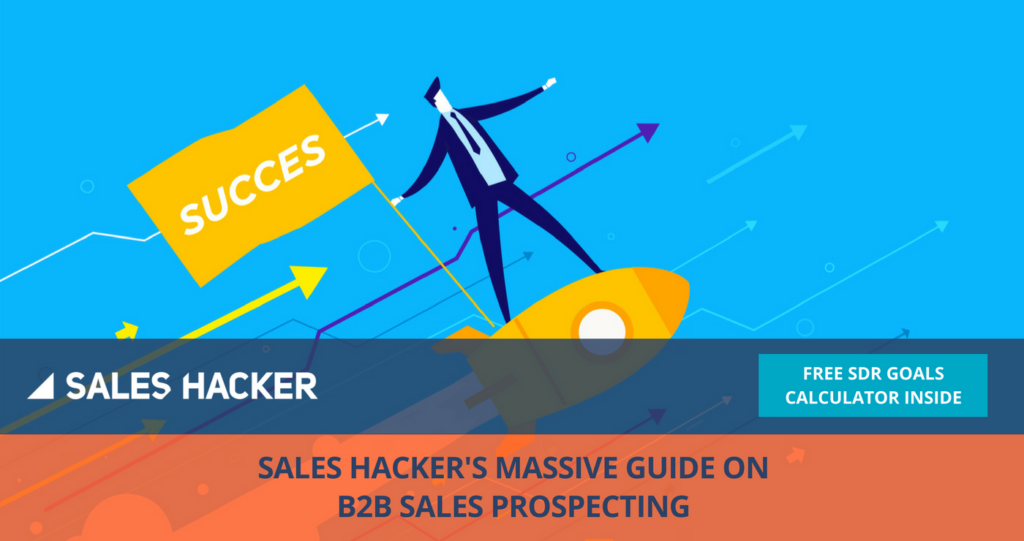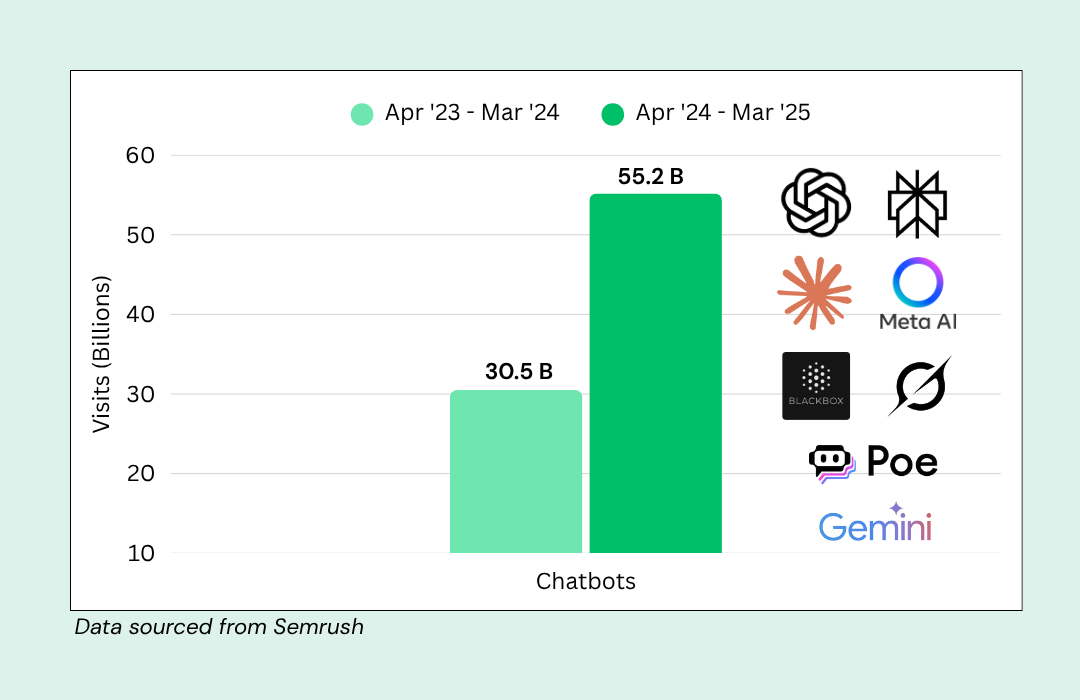Every business runs like a B2B sales prospecting operation. You head out to a territory (market) where you can mine (generate) something valuable, then sift (qualify) good finds from the bad. You then focus on refining (nurturing) the good finds and attempt to make a hefty profit by selling value to the best buyers.
For B2B organizations, customers now represent the new gold to be desired and the sales team’s pipeline the new gold mine to be developed.
From Old West pioneers who sparked the California Gold Rush to entrepreneurs in Silicon Valley who use blockchain networks to mine bitcoins, one thing remains constant:
You need to prospect continually to break even, make a profit, and grow the business.
Keep your sales pipeline full by prospecting continuously. Always have more people to see than you have time to see them. ~ Brian Tracy
Why B2B Sales Prospecting Needs More Attention Than You Think
That is easier said than done, of course. After all, B2B sales prospecting is back-breaking work—both in the original sense and in the context of a modern sales floor.
Because prospecting activities and performance directly correlate with top-line revenue, it counts among the most important processes in every for-profit organization. But because it often seems tedious and intrusive, prospecting also ranks among the most dreaded tasks of sales professionals.
Add to this, competition, high churn rates, and low barriers to brand-hopping, the need to prospect has become even more intense.
If your team stokes the natural aversion to sales prospecting, you will soon be out of the race. In contrast, if you discover and adopt smarter, faster, and better ways of prospecting, you will eventually DOMINATE your market.
Related: Best Prospecting Methods — 4 Ways To Stop Second-Guessing How You Prospect
What is B2B Sales Prospecting?
Sales prospecting is the stage in the sales process where you—typically sales or business development representatives (SDRs, BDRs)—search for, make contact with, and engage key persons from business organizations. Good sales prospecting will most likely turn these businesses into paying customers.
During a prospecting engagement, sales professionals attempt to qualify leads (i.e., potential customers) into sales-ready leads. You can do this by:
1) probing their needs.
2) isolating their pain points.
3) assessing their profile based on your ideal customer profile.
When they find a match, SDRs or BDRs then set the stage for account executives or veteran sales reps to close profit-reeling deals with the sales qualified leads.
The goal of prospecting is to build a healthy “supply” of qualified prospects to let your company continuously attract new customers and keep your business humming.
B2B Prospecting Ideas and Stats That Might Surprise You
SDRs consider it to be one of the MOST dreaded sales activities.
In fact, a HubSpot study found that more than 40% of sales professionals consider prospecting as the most challenging part of the sales process, beating even the art of closing (36%).
Your sales pipeline is the best indicator of whether or not you will hit quota.
The number of opportunities in your pipeline per month has a direct correlation with your quota attainment rate. It’s always best to reverse engineer the number of opportunities your reps need to bring in, in order to hit quota.
Cramming never works. Neither does procrastination.
Your reps often exert their best efforts near the end of a reporting period, usually the last month in a quarter. Unfortunately, the success rate of 11th-hour sales prospecting calls turns out worse than those made in normal periods.
You can’t control customer behavior. But you can control how you prospect.
Prospecting is a key area that your sales team can directly and effectively control to drive top-line performance. That’s why it’s absolutely important to have a solid footing with your sales pipeline management.
4 Prospecting Myths – DEBUNKED
Rain Group research debunked several closely held myths about prospecting such as—
1) Because product info is already accessible online, buyers don’t want to hear from sellers. (Around 82% of buyers actually do.)
2) Cold calling is not dead! (Nearly half of buyers prefer getting calls).
3) Buyers don’t want to hear about your product’s capabilities. (Product descriptions influence 67% of buyers to accept a meeting).
4) Cold meetings don’t end up as sales wins. (They apparently do when you focus on the value you can deliver to prospects, approach them collaboratively and articulate game-changing ideas for their business.)
7 Common B2B Sales Prospecting Methods
Sales professionals use a range of methods to find, evaluate, and qualify prospects. These methods include the following:
1) Cold calling
2) Referrals
3) Warm Calling
4) Mail
5) Email Prospecting
6) Event Prospecting
7) Social selling
B2B Prospecting Techniques to Definitively Boost Your Performance
Not all prospecting activities lead to a gold mine. Some will just make you lose precious energy and time you can otherwise spend executing prospecting techniques that work. In fact, nearly half of selling time is reportedly wasted on unproductive prospecting.
Fortunately, advanced sales enablement strategies and data-driven business insights can drastically improve the outcomes of traditional prospecting methods.
When old ways of doing things no longer move the needle, then it’s time to embrace the new!
Prospecting (and sales) is a numbers game.
Sure, quality matters, but so does sales velocity.
The more fish you have in a pond, the better chances you have of finding a good catch. When you accept this, your team becomes accountable for always keeping the pipeline full by prospecting aggressively on a regular basis. Adopt relevant activity metrics—such as the number of opportunities/SDR/month—to ensure everyone meets their targets.
Sales velocity is key.
The faster your team closes deals on the average, the more deals and revenue you can deliver in a given period. So expedite the prospecting process by proactively “warming up” cold calls and cold emails through in-depth research, social networking, and referrals.
Get to know as much about a potential customer before initiating a conversation. Focus on prospects with higher deal-value potential and take the quick routes in connecting with an organization’s key influencers and decision makers.
Video rocks, then and now.
What video did to the music industry, it is doing to the world of sales. Heck, it even drove an extra $44K in revenue at Consensus!
Done the right way, videos can help facilitate initial and sustained contact with potential customers. Shake up your email outreach and video calls with pre-recorded videos that quickly and effectively articulate the many ways a relationship with you can make a difference in your prospect’s business.
Don’t ignore inbound.
While inbound operations are technically separate from prospecting, they share the same goal: qualify, grow, and nurture the pipeline.
Get social (it pays to be friendly).
Use social media to build transparent and sincere relationships with potential customers. Refrain from hard selling. Instead, offer value by sharing insights that could help prospects overcome their challenges.
Start here: How To Build Your Personal Brand On LinkedIn (And Drive More Sales Conversations)
Turn mistakes into mastery.
Selling involves a ton of rejection. Maybe you made a wrong move or pulled the wrong string. Or maybe there are alternatives in the market with superior features compared to your product.
Whatever led to the lost opportunity, don’t let your disappointment go to waste. Learn from them. Keep notes.
Ask yourself these 5 questions:
1) What factors triggered the prospect’s final decision to say no?
2) What features does your competitor provide that swayed the prospect to decide in their favor?
3) Which part of the workflow or process can you improve on?
4) Can you still revive a relationship with the prospect down the road?
5) Did they give a referral?
Make it personal.
Regardless of the prospecting method, always make it personal.
In the end, even in a B2B environment, decisions are made by humans who are guided by emotions, even more so than rationality. So keep your messaging specific, relevant, and casual.
Personalize sales decks, pitches, solutions, and sales content for each prospect. Don’t sell like a robot reading a script. Instead, listen like a concerned friend and act like one.
Use the right tools.
Use B2B prospecting tools that match your business model.
Among the key selling tools you should have in your technology stack are those for sales and marketing intelligence (Artesian, DiscoverOrg, etc.), customer relationship management (Salesforce, Insightly, etc.), lead generation (DataFox, DealSignal, etc.), sales engagement (Outreach, SalesLoft, etc.) and productivity (Cognism, Fileboard, etc.).
We recently published a comprehensive list of tools and software that can help you top your sales performance.
It All Begins with Sales Prospecting
Business success depends on sales (quite obviously!).
Sales growth depends on prospecting. Prospecting skills get better with practice.
Master prospecting and you will be the master of your sales destiny. ~ Tibor Shanto
Whether you are a sales manager leading a team towards its best performance yet, or a sales development rep tasked to grow a pipeline of qualified prospects, these methods and strategies will help take your prospecting game to the next level.







